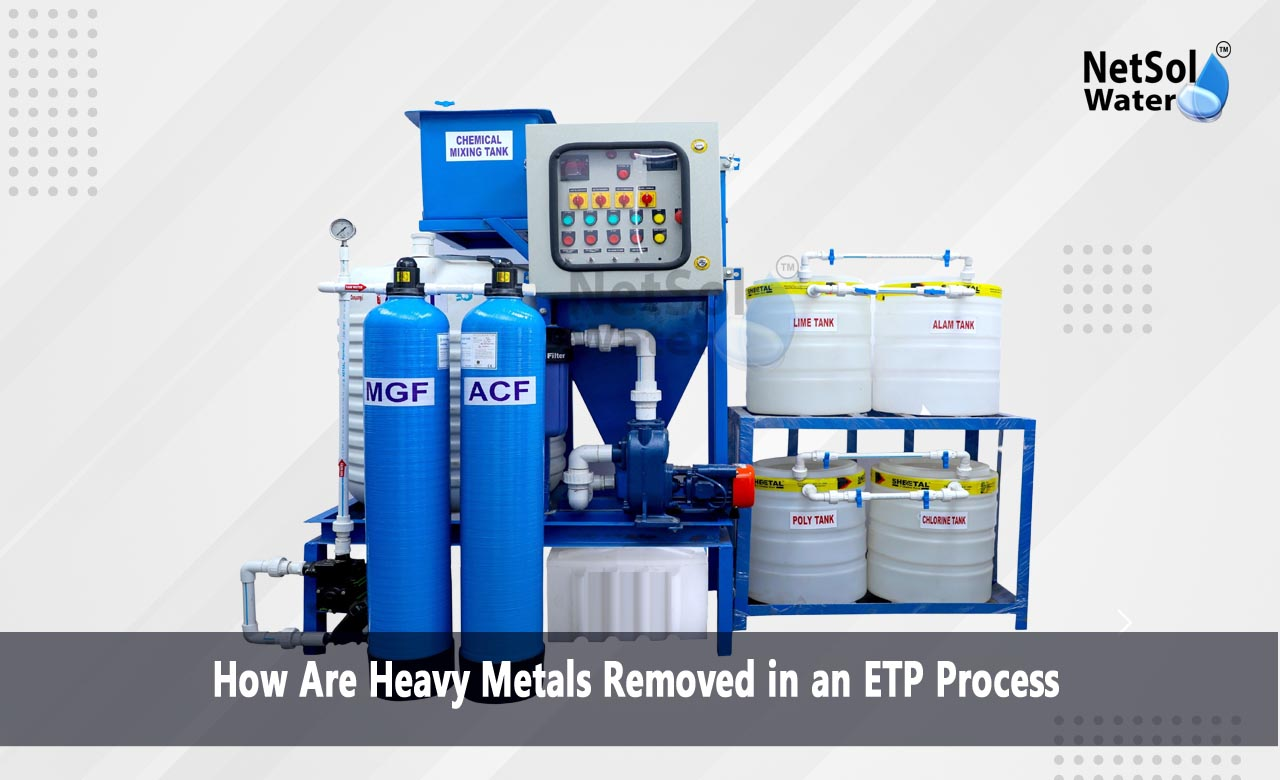How Are Heavy Metals Removed in an ETP Process?
Effluent treatment plants must clear industrial water of harmful metals before release. Heavy metals pose risk to human health and to the environment. Netsol Water leads the field in crafting efficient treatment systems. The company shapes devices that deliver consistent removal of metals. It combines design skill with reliable components to guard water sources. This process not only meets legal norms but also protects public health and supports a cleaner planet.
The process begins in influent collection and moves through a series of steps. Each step serves a clear role in reducing metal content. Proper design makes a plant both simple to run and easy to maintain. Netsol Water’s systems handle metals such as lead, cadmium, mercury, and chromium. They adapt to varied flow rates and waste loads. With solid engineering the plant runs smoothly with minimal downtime and low operating cost.
Chemical Precipitation
Chemical precipitation forms the first stage against dissolved metals. This stage transforms metal ions into solid particles. These solids then settle out of the water. In this way the plant handles the bulk of the metal load. Netsol Water supplies precise dosage systems and reliable mixers.Let us have a look at some common methods
Sulfide Precipitation
Sulfide reacts with metal ions to form insoluble metal sulfides. The process works under simple conditions. Operators add a sulfide agent to the water. The metals bond with sulfide and form solid matter. This matter settles to the bottom. Netsol Water tailors the agent type to match the waste metal profile.
Hydroxide Precipitation
Hydroxide addition raises the pH. Metals then form metal hydroxide solids. These solids cluster into larger particles. They fall out of suspension. Netsol Water offers pH control units that fine tune the reaction. They ensure full conversion of metal ions to solids.
Read: Effluent Treatment Plant Manufacturer
Coagulation and Flocculation
Coagulation and flocculation follow precipitation to clear fine particles. These steps bring minute solids together into larger clusters. This makes separation more efficient. Netsol Water designs systems that use minimal chemical feed and lower sludge volume.Let us have a look at some ways to join particles
Coagulant Dosing
A coagulant agent neutralizes particle charge. This reduces repulsion between solids. The particles then move closer. Netsol Water installs meter pumps that deliver the right dose at the right time.
Flocculator Design
A flocculator gently stirs the water. It allows tiny particles to collide and cling together. The result forms flocs that settle faster. Netsol Water shapes flocculator zones to match flow patterns. This design leads to clear overflow water.
Membrane Filtration
Membrane filtration serves as a polishing stage. It captures minute particles and residual metal complexes. The method offers consistency and high removal rates. Netsol Water builds strong membrane skids that fit plant layouts.Let us have a look at some membrane types
Ultrafiltration
Ultrafiltration membranes block particles above a defined size. They remove colloids and metal complexes. The water passes through under moderate pressure. Netsol Water selects materials that resist fouling. This choice extends the life of the membrane.
Reverse Osmosis
Reverse osmosis forces water through a semi permeable membrane. It removes dissolved salts and metals. The process works under higher pressure. Netsol Water integrates energy recovery devices. These devices cut power needs and lower costs.
Ion Exchange
Ion exchange offers targeted removal of specific metal ions. Resin beads swap harmless ions for toxic ones. This mechanism yields low metal content water. Netsol Water engineers exchange columns that run for long cycles before recharge.Let us have a look at some resin options
Cation Exchange
Cation resins hold sodium ions. When water flows through the resin bed metal ions swap with sodium. This captures metals in the resin. Netsol Water chooses resins with high selectivity for each unwanted metal.
Chelating Resins
Chelating resins form strong bonds with metal ions. They work well at lower metal concentrations. Netsol Water uses this method to polish water after other stages. The result meets strict discharge limits.
Adsorption
Adsorption offers a final barrier against trace metals. The process traps metals on the surface of an adsorbent. Netsol Water provides vessels packed with activated carbon or specialized media.Let us have a look at some adsorbent media
Activated Carbon
Activated carbon binds organic matter and some metals. Its high surface area makes it effective. Netsol Water sizes the carbon bed to match flow and contaminant levels.
Specialty Media
Specialty media bind specific metals such as arsenic or chromium. They work under set pH and temperature ranges. Netsol Water tests feed water to choose the right media type.
Conclusion
Heavy metals removed in an ETP process reach safe levels through a series of well planned steps. Netsol Water stands out as a top manufacturer of full scale treatment plants. The company delivers systems that work in any industrial setting and any waste profile. Contact Netsol Water for more information or to request a consultation on your next ETP project.
Contact Netsol Water at:
Phone: +91-9650608473, Email: enquiry@netsolwater.com



